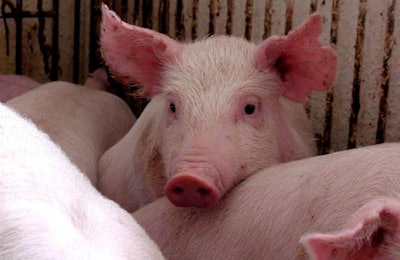
While group sow housing may be viewed by many in the animal rights movement as an improvement for the well-being of the animals, American Farm Bureau Federation (AFBF) President Vincent “Zippy” Duvall says members of the organization he leads do not agree.
Duvall, a beef and poultry farmer from Georgia, says while he does not have first-hand experience with raising pigs, he has visited with pig producer members of AFBF who do not see converting from gestation stalls to group housing as a good thing.
One AFBF member told Duvall when she made the switch to group housing, she was advised by both a veterinarian and a nutritionist that she should go back to stalls, because with stalls, the need for antibiotic treatment of the pigs is reduced. Within the confines of a stall, the animals didn’t injure themselves as often as the environment was more controlled, and their general health was better, said Duvall.
“It’s just the opposite of what the American people want,” he said. “If you go to group housing, there’s going to be more need to use antibiotics, and people are wanting farmers to use fewer antibiotics.”
Farm worker safety
Duvall said the controlled environment provided through the use of gestation stalls also reduces injuries for the people who work with the pigs.
One producer told Duvall their family farm had two workers that needed to have back operations and another two needed knee operations, because of the hazards of working with more mobile animals in a more open environment.
Financial factors
The financial investment involved for a family farm to make the switch from gestation stalls to group housing is a big factor to consider.
One AFBF member told Duvall that lending institutions were unlikely to offer loans to producers wishing to make the transition because there was not enough incentive.
Instead, it is the larger companies and integrators that are the ones making the switch, which would squeeze out small family farms – something the AFBF membership base or the consumer does not want to happen.
















